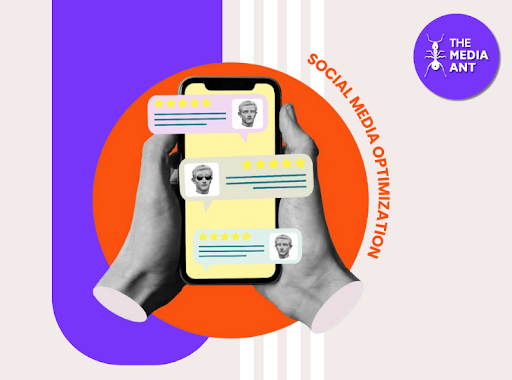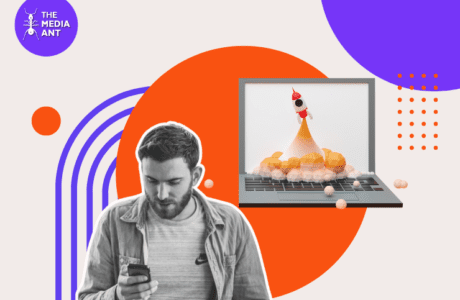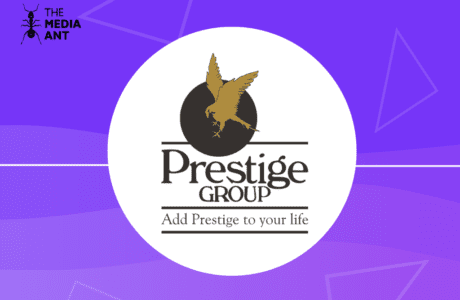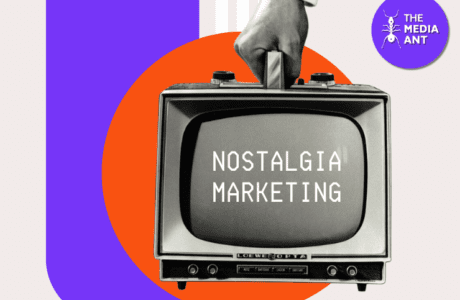Let’s be honest — social media isn’t just about scrolling through memes or following influencers anymore. In 2025, it’s a full-blown marketing powerhouse. But here’s the catch: simply being on social media isn’t enough; you need to optimize your presence to stay ahead of the competition.
That’s where Social Media Optimization (SMO) comes in. Let me walk you through why it’s essential, real-world examples, the best tools, and actionable strategies you can start using today.
What is Social Media Optimization in 2025?
Social Media Optimization (SMO) is all about making your social media profiles and content work smarter, not just harder. In 2025, that means leveraging AI-driven insights, creating interactive content, and staying updated with ever-changing platform algorithms.
Think of it this way: social media is a crowded party. SMO is your way of being the life of that party — by saying the right things, at the right time, to the right people.
What Does SMO Look Like in 2025?
Let’s paint a picture of social media optimization in 2025. It’s not just about posting pretty pictures anymore — it’s about creating meaningful experiences. So, what’s new and exciting? Let’s break it down:
1. AI-Powered Personalization: Making Your Content Feel Like a VIP Invite
AI has become your social media BFF. It analyzes what your audience clicks on, comments on, and even scrolls past, then suggests content tailored to their preferences. Think of it as a personal stylist — but for your social media feed. Posting the right content at the right time has never been this precise.
2. Platform-Specific Strategies: One Size Doesn’t Fit All
Here’s the deal — what works on TikTok might flop on LinkedIn. A dance challenge might be viral gold on TikTok, but your LinkedIn audience? Probably not interested. In 2025, successful brands craft strategies that respect each platform’s vibe. TikTok gets fun trends, Instagram thrives on aesthetics, and LinkedIn stays professional but engaging.
3. Engaging Content Formats: Give the People What They Want
Gone are the days of static posts. Users in 2025 crave interactive and dynamic content. That means more reels, behind-the-scenes Stories, and live Q&A sessions where you actually connect with your audience in real time. Don’t be afraid to get creative — authenticity wins hearts (and engagement rates).
Social media is evolving fast, but if you stay flexible, creative, and genuinely invested in your audience, you’re already ahead of the game.
Why Social Media Optimization is Important for Business?
You might be wondering — “Why should I care about SMO when I’m already posting content?”
Great question! Here’s why SMO is a game-changer:
1. More Brand Visibility
In 2025, social media algorithms are smarter than ever. They prioritize content that keeps users engaged and coming back for more. This means your brand needs to consistently produce optimized, engaging, and valuable content to stay visible. When done right, Social Media Optimization (SMO) can help your posts reach a larger audience, even without spending on ads.
Think of it like this: when you optimize your social media content, you’re giving the algorithm a reason to push it higher on users’ feeds, making your brand more discoverable to both existing and potential customers.
2. Higher Engagement Rates
People scroll through countless posts daily, but they stop and engage only when the content speaks directly to their needs or interests. Timely, relevant, and valuable content holds the key to winning their attention.
SMO helps you understand the kind of content your audience loves, whether it’s interactive polls, quick how-to videos, or inspiring stories. By delivering this content consistently, your brand can foster genuine connections, leading to higher likes, shares, comments, and even direct messages.
Here’s a simple tip: ask questions, run contests, or simply post engaging content that prompts users to interact. The more they engage, the more visible your content becomes.
3. Improved SEO (Search Engine Optimization)
Surprise! Social media activity doesn’t just boost engagement; it can also indirectly enhance your search engine rankings. While social signals aren’t a direct Google ranking factor, they do influence search results.
Here’s how it works:
- When your social media posts drive traffic to your website, it signals to search engines that your site is valuable.
- More shares and mentions of your brand increase brand authority and awareness.
- Consistent social engagement can lead to backlinks from other reputable websites.
So, optimizing your social media content can actually help you rank better on Google, bringing more organic traffic to your website.
4. Cost-Effective Marketing
Let’s face it — advertising budgets can quickly spiral out of control. But here’s the good news: with effective SMO, you can achieve great results organically without constantly relying on paid ads.
For example, instead of spending heavily on promotions, you can focus on creating shareable content that drives organic growth. Viral posts, user-generated content, and strong brand storytelling are cost-effective ways to maintain a strong social media presence.
Remember: it’s not about posting more; it’s about posting smarter.
5. Stronger Customer Relationships
In 2025, relationships matter more than ever. Consumers want to interact with brands that listen, respond, and engage in real time. Social media gives your business the perfect platform to build these relationships.
By optimizing your content and engagement strategy, you can:
- Respond quickly to customer queries and concerns.
- Show appreciation for loyal customers through shout-outs or special offers.
- Create a community where your audience feels heard and valued.
These real-time interactions build trust and loyalty, turning casual followers into lifelong customers. And as we all know, a loyal customer is worth much more than a one-time buyer.
Social Media Optimization Examples
Let’s get inspired by some brands that are nailing social media optimization:
1. Nike’s AI-Driven Content Personalization
Nike uses AI to analyze user data and create highly personalized content. From fitness challenges to motivational posts, they know what their audience wants before they even ask.
2. Zomato’s Trend-Jacking Posts
Zomato is a pro at jumping on viral trends. Their witty, timely content often goes viral, proving that humor and relevance go a long way.
3. HubSpot’s B2B LinkedIn Strategy
HubSpot shares valuable, in-depth content tailored for LinkedIn’s professional audience. They focus on sparking meaningful conversations rather than just broadcasting messages.
Best Social Media Optimization Tools for 2025
The right tools can make your SMO efforts smoother and more effective. Here are some must-haves:
1. Hootsuite
- Why You Need It: Manage multiple platforms from a single dashboard.
- Pro Tip: Use it to schedule posts and analyze performance metrics.
Tool link : Hootsuite SMO Tool
2. Lately.ai
- Why You Need It: Automatically repurpose long-form content into bite-sized social posts.
- Pro Tip: Save hours by letting AI handle repetitive tasks.
Tool Link: Lately AI SMO Tool
3. Canva
- Why You Need It: Design stunning visuals without needing a graphic design degree.
- Pro Tip: Use their templates for eye-catching posts.
Tool Link: Canva Tool
4. Sprout Social
- Why You Need It: Advanced analytics and CRM integration.
- Pro Tip: Dive deep into audience insights for better targeting.
Tool Link: Sprout Social SMO Tool
5. BuzzSumo
- Why You Need It: Discover trending content ideas and track performance.
- Pro Tip: Monitor your competitors to stay one step ahead.
Tool Link: Buzz Sumo SMO Tool
Top Strategies for Social Media Optimization in 2025
- Create Platform-Specific Content:Understand that each platform has its unique style and audience behavior. For instance, LinkedIn thrives on professional insights, Instagram on visual storytelling, and Twitter on real-time updates. Craft content accordingly to maximize engagement.
- Leverage Video Content (Especially Short-Form):Short videos are ruling the social landscape. Create engaging content for platforms like Instagram Reels, YouTube Shorts, and TikTok. Focus on storytelling within seconds to captivate your audience.
- Adopt Data-Driven Content Strategies:Regularly monitor analytics to assess content performance. Identify trends, best-performing posts, and audience preferences to fine-tune your strategy and improve engagement rates.
- Focus on Community Building: Build a loyal community by interacting with your audience. Conduct live sessions, polls, contests, and AMAs (Ask Me Anything) to create meaningful connections.
- Personalize User Experience: Use AI tools to segment your audience and deliver personalized content. Address users by name in messages, recommend tailored products, or share curated content based on their preferences.
- Maintain Consistency: Consistent posting is key to staying relevant. Plan a balanced content calendar that includes images, videos, infographics, and carousel posts to keep your audience engaged.
- Collaborate with Influencers Wisely: Partner with micro-influencers who have a loyal and niche following. Their authentic approach often resonates better than big celebrity endorsements.
- Optimize for Voice and Visual Search: Use conversational language in captions and high-quality images with proper alt-text descriptions. This ensures better discoverability across both voice and image searches.
- Embrace Emerging Technologies (AI and AR): AI can help with content suggestions and scheduling. AR filters and effects can drive interactive campaigns, increasing user engagement and brand recall.
- Humanize Your Brand: Share authentic behind-the-scenes content, team stories, and customer success experiences. Showcasing your brand’s human side builds trust and relatability with the audience.
Challenges and Solutions for SMO in 2025
1. Constantly Changing Algorithms
Challenge: Social media platforms frequently update their algorithms, making it harder for brands to maintain consistent visibility.
Solution:
- Stay updated with algorithm changes by following platform blogs and expert insights.
- Diversify content formats (videos, carousels, and reels) to adapt to platform preferences.
- Encourage user engagement as platforms prioritize interactive content.
2. Content Saturation
Challenge: With the rise of social media users and brands, breaking through the clutter has become increasingly difficult.
Solution:
- Focus on quality over quantity—create unique, high-value content that solves audience problems.
- Leverage storytelling techniques to capture attention.
- Experiment with trending content formats like short-form videos.
3. Declining Organic Reach
Challenge: Platforms prioritize paid content, reducing the visibility of organic posts.
Solution:
- Build a strong community through interactive posts and direct audience engagement.
- Invest in a strategic mix of paid and organic posts.
- Use retargeting campaigns to reach warm audiences cost-effectively.
4. Privacy Concerns and Data Restrictions
Challenge: With stricter data privacy regulations, targeting the right audience has become more challenging.
Solution:
- Shift to first-party data collection through quizzes, surveys, and opt-ins.
- Focus on contextual targeting rather than behavioral tracking.
- Be transparent about data usage to build audience trust.
5. Short Attention Spans
Challenge: Users are scrolling faster than ever, making it difficult to capture and retain their attention.
Solution:
- Use visually appealing content with strong hooks in the first few seconds.
- Keep captions concise and engaging.
- Incorporate interactive elements such as polls and quizzes.
6. Platform Fragmentation
Challenge: New platforms are emerging while traditional ones remain dominant, dividing audience attention.
Solution:
- Identify where your target audience spends most of their time and prioritize those platforms.
- Repurpose content smartly across multiple channels to maintain efficiency.
- Continuously experiment with emerging platforms.
7. Balancing Automation and Authenticity
Challenge: While automation tools save time, they can make your brand feel robotic.
Solution:
- Use automation for scheduling and analytics but maintain a human touch in audience interactions.
- Personalize responses and engage genuinely with comments and messages.
8. Measuring SMO ROI
Challenge: It can be challenging to directly measure the impact of SMO on business results.
Solution:
- Set clear, measurable goals (engagement rates, traffic, conversions).
- Use analytics tools to track performance.
- Combine quantitative metrics with qualitative insights to understand audience sentiment.
9. Crisis Management in Real-Time
Challenge: Negative comments or viral backlash can harm brand reputation.
Solution:
- Monitor social media mentions continuously with tools like Hootsuite or Sprout Social.
- Respond promptly and empathetically to negative comments.
- Have a crisis communication plan in place.
10. Staying Relevant with Trends
Challenge: Trends come and go quickly, making it difficult for brands to stay relevant.
Solution:
- Follow influencers and industry leaders for early trend detection.
- Be agile and quick to adapt to emerging trends.
- Incorporate user-generated content to stay authentic and relatable.
Conclusion
Social Media Optimization (SMO) in 2025 is not just about staying visible but creating meaningful, lasting connections with your audience. As social platforms evolve, so do the challenges, but with the right strategies, brands can continue to thrive. By focusing on authentic engagement, data-driven decisions, and creative storytelling, businesses can stay ahead of the curve and build strong digital footprints.
Remember, success in SMO is a balance of adaptability, creativity, and genuine interaction. If you’re ready to elevate your brand’s social presence, The Media Ant can help you navigate the ever-changing social landscape with innovative and results-driven solutions.
Frequently Asked Questions
What are the benefits of SMO?
Increased Brand Visibility: Optimized social media content helps reach a wider audience.
Higher Engagement Rates: Drives more likes, shares, and comments from your target audience.
Improved SEO: Social signals can indirectly enhance your search engine rankings.
Cost-Effective Marketing: Organic reach reduces the need for paid ads.
Stronger Customer Relationships: Enables real-time interactions that build trust and loyalty.
What is an example of SMO?
A brand like Nike using Instagram Stories, polls, and user-generated content to engage with its audience is a great example of SMO. They optimize their content by analyzing engagement metrics and tailoring posts that resonate with their audience.
How to use SMO in digital marketing?
Create Shareable Content: Use visuals, infographics, and engaging copy.
Optimize Social Profiles: Use relevant keywords in your bio and descriptions.
Post Consistently: Maintain a regular posting schedule based on platform analytics.
Engage with the Audience: Reply to comments and participate in trending discussions.
Leverage Analytics: Continuously track and refine your strategy.
What are the two types of SMO?
On-Page SMO: Optimizing content on social media profiles, including profile information and visuals.
Off-Page SMO: Promoting your content across external channels like blogs, forums, and social media groups.
What are the objectives of SMO?
Increase Brand Awareness: Reach a wider audience across platforms.
Enhance Customer Engagement: Build meaningful interactions with your audience.
Drive Website Traffic: Funnel social media users to your website.
Improve Search Engine Rankings: Boost visibility through social signals.
Generate Leads and Conversions: Drive business growth through social campaigns.





